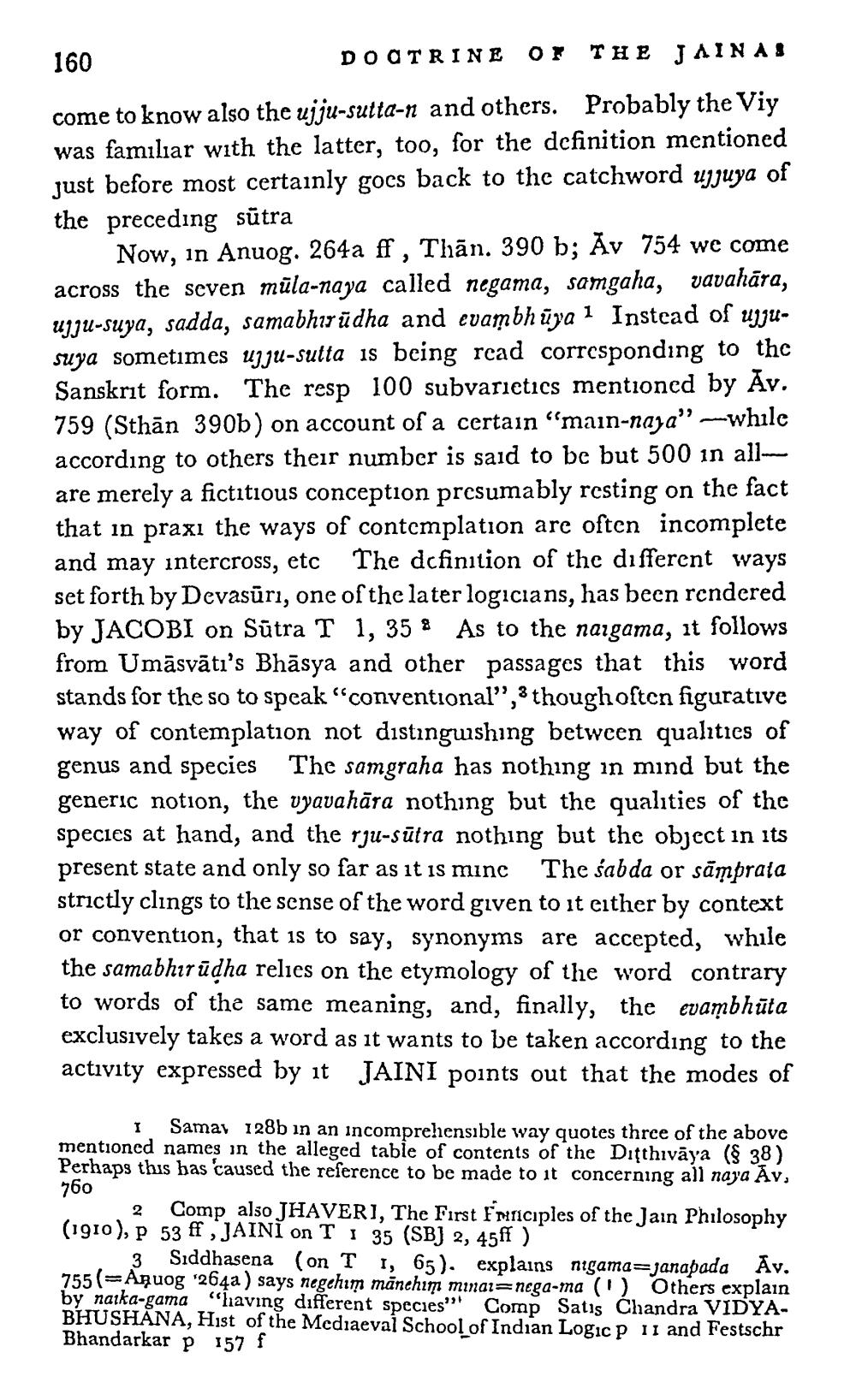________________
160
THE JAINAS come to know also the ujju-sutta-n and others. Probably the Viy was familiar with the latter, too, for the definition mentioned just before most certainly goes back to the catchword ujjuya of the preceding sūtra
Now, in Anuog. 264a ff, Thãn. 390 b; Av 754 we come across the seven mula-naya called negama, samgaha, vavahāra, ujju-suya, sadda, samabhirudha and evambhūya 1 Instead of ujjusuya sometimes ujju-sutta is being read corresponding to the Sanskrit form. The resp 100 subvarietics mentioned by Av. 759 (Sthan 390b) on account of a certain "main-naja" while according to others their number is said to be but 500 in allare merely a fictitious conception presumably resting on the fact that in praxi the ways of contemplation are often incomplete and may intercross, etc The definition of the different ways set forth by Devasuri, one of the later logicians, has been rendered by JACOBI on Sūtra T 1, 35 & As to the naigama, it follows from Umāsvāti's Bhasya and other passages that this word stands for the so to speak "conventional", though often figurative way of contemplation not distinguishing between qualities of genus and species The samgraha has nothing in mind but the generic notion, the vyavahāra nothing but the qualities of the species at hand, and the rju-sūtra nothing but the object in its present state and only so far as it is mine The sabda or samprata strictly clings to the sense of the word given to it either by context or convention, that is to say, synonyms are accepted, while the samabhiruḍha relies on the etymology of the word contrary to words of the same meaning, and, finally, the evambhuta exclusively takes a word as it wants to be taken according to the activity expressed by it JAINI points out that the modes of
DOCTRINE
OF
I Samay 128b in an incomprehensible way quotes three of the above mentioned names in the alleged table of contents of the Ditthivaya (§ 38) Perhaps this has caused the reference to be made to it concerning all naya Av. 760
2 Comp also JHAVERI, The First Frinciples of the Jain Philosophy (1910), p 53 ff, JAINI on T 1 35 (SBJ 2, 45ff)
3 Siddhasena (on T 1, 65). explains nigama janapada Av. 755(Anuog 264a) says negehim manehim minai nega-ma (1) Others explain by naika-gama "having different species" Comp Satis Chandra VIDYABHUSHANA, Hist of the Mediaeval School of Indian Logic p 11 and Festschr Bhandarkar p 157 f




